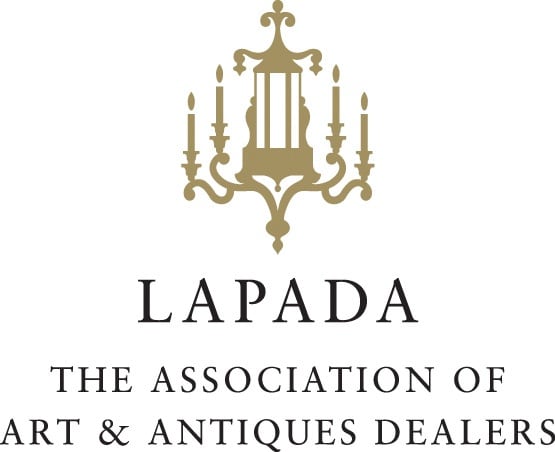John Wells 1907-2000
Frame: H. 53 x W. 41.5 cm.; 20¾ x 16½ in.
Painted in 1947, Reticulation belongs to a key period of British Modernism unfolding in St Ives – its charge first led by Ben Nicholson and Barbara Hepworth and carried forward by a younger generation of post-War painters, such as Patrick Heron and Peter Lanyon.
Born in London to a Cornish mother and bacteriologist father, Wells as a young man balanced his interests in medicine and art, taking evening classes at St Martin’s School of Art from 1927-28 while concurrently training at University College and Hospital, London, qualifying in 1930. Wells would visit Nicholson who at the time had his studio in Hampstead. From 1936-45, Wells was a practising GP on the Isles of Scilly, but visited St Ives regularly to continue his artistic interests. One formative encounter was meeting Naum Gabo via Nicholson and Hepworth, which introduced him to the theories and possibilities of Constructivism. He created Construction 1940/41 as a direct response, which Gabo described to Nicholson as ‘the perfect first effort in special construction’. Lanyon too was exploring his own constructions under the influence of Gabo.
At the close of the Second World War, Wells committed himself fully to his artistic career, moving to Newlyn and purchasing the former studio of the Newlyn School founder, Stanhope Forbes. Through the late 1940s and 50s, Wells was a critical figure in the post-War St Ives community. His paintings balanced a pure Constructionist approach against the natural environment, allowing space for external elements to filter in. In Reticulation, geometric tension is created through intricate angular lines, dissecting space akin to Gabo’s stringed Perspex structures, yet discs and colour are a deliberate evocation of the natural world. As Wells remarked in a letter so Sven Berlin:
"So all around the moving air and the sea’s blue light, with points of a diamond, and the gorse incandescent beyond dark trees – countless rocks ragged or round of every colour – birds resting or flying, and the sense of a multitude of creatures living out of their minute lives …. All of this is just part of one’s life, and I want desperately to express it – not just what I see but what I feel about it and beyond it. If I paint what I see the result is deplorable. But how can one paint the warmth of the sun, the sound of the sea or the journey of a beetle across a rock or thoughts of one’s whence and whither?" (John Wells, in a letter to Sven Berlin, 1945)
Wells’ answer was to reference these external elements and emotions through abstract forms and colour, of which Reticulation is a superb example, allowing for multiple interpretations. As the title suggests, the arrangement of interlacing lines especially concentrated near the centre resemble a net, while boats and rigging might also be invoked. The scrubbed, grey background against which the formal elements are placed evoke a sense of movement and openness – moving skies, sea or the texture of the earth itself? The prominent white disc recalls Nicholson’s reliefs in the 1930s, and Hepworth’s pierced sculptures, which was a critical visual idiom in the Modernist language. Its use here – against a scrubbed background – recalls Nicholson’s c.1946-47 (3 Circles), Pier Arts Centre, Stromness, completed the same year.
Wells developed a method of abstraction that was integrally situated within the environment akin to Lanyon; yet while Lanyon sought his experiences on soaring flights over the Cornish landscape, Wells remained grounded. This distinct synthesis of technique Wells developed was a vital contribution to this dynamic period of British Modernism.
Provenance
Christie's, London, 21 March 2013, lot 9Private collection (purchased from the above)
Join our mailing list
Be the first to hear about our upcoming exhibitions, events and news
* denotes required fields
We will process the personal data you have supplied to communicate with you in accordance with our Privacy Policy. You can unsubscribe or change your preferences at any time by clicking the link in our emails.




